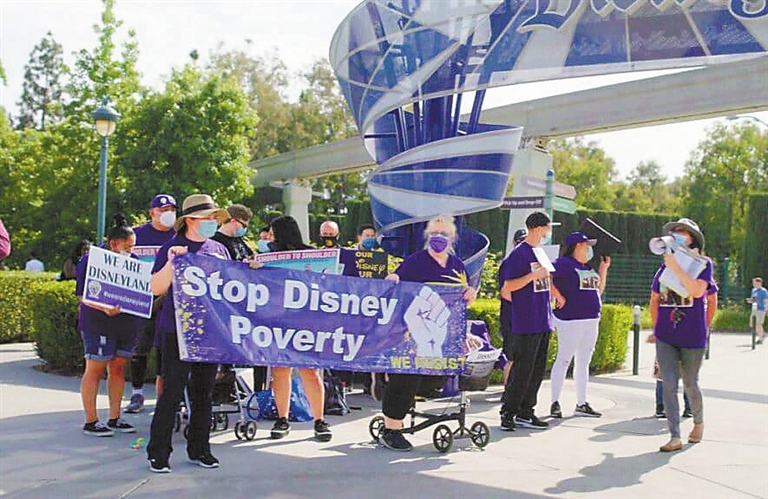
Think of this the next time you go to Disneyland and you find yourself hugging one of those adorable costumed characters: The person underneath that costume may be going without health care. Or not have enough money to pay their rent and is sleeping in their car. Or is surviving on groceries from food stamps or a food pantry. That’s the sobering message of Abigail Disney and Kathleen Hughes’ new documentary, “The American Dream and Other Fairy Tales,” receiving its world premiere at the Sundance Film Festival. Disneyland may be “The Happiest Place on Earth” for those who can afford to visit, but not so much for its “cast members,” as the company calls its workers. Abigail Disney has been on a crusade to shed light on economic inequality for years, and she’s in a fairly unique position to do so, being the granddaughter of company co-founder Roy. “Having the last name Disney is like having a weird superpower you didn’t ask for,” she comments in the film, later admitting that she feels “complicit” because her considerable assets largely stem from her inheritance of company shares. Those shares are awfully valuable, thanks in no small part to the company — like so many others in America — prioritizing profits and shareholders over the lives of its employees. The documentary features commentary from five of those employees, who have worked there for periods ranging from 5 to 47 years. They describe in vividly haunting detail their struggles to make ends meet on incomes of US$15 an hour, plus an extra 75 cents hourly for night shifts. The money doesn’t go far in the Anaheim/Orange Country area, where a recent analysis has shown that a living wage would be over US$24 an hour. The workers’ plight became worse during the pandemic, when they were laid off by the thousands. Contrast their situations to that of former CEO Bob Iger, whose income in 2018 was US$65 million. In 1967, Roy Disney’s pay, including stock options, was just 78 times that of the company’s lowest paid workers, as compared to a disparity numbering in the thousands today. “The Disney company is ground zero of the widening inequality in America,” comments one of the film’s talking heads, who include several university professors and such writers as Kurt Andersen and Neal Gabler, the latter the author of “Walt Disney: The Triumph of the American Imagination.” An Anaheim City Council member describes Anaheim as “a tale of two cities,” with a severely run-down southern section that doesn’t benefit from the huge subsidies and tax breaks given to Disney and the other theme parks. The film includes footage of Disney testifying before a congressional committee, where she’s accused of promoting “socialism” and “Marxism” by, no surprise, Republican members. She also wrote to Iger, who responded by acknowledging the problems of the company’s workers but blaming the government for failing them. “The American Dream and Other Fairy Tales” falters a bit when it broadens its scope to examine the dramatic increase in economic inequality in the country, from the prosperity of the middle class in the 1950s to the current era in which far too many workers make a minimum wage but not a living wage. It’s not that the film’s arguments aren’t sound, but it all feels familiar coming after so many documentaries exploring similar themes. Still, the film makes an extremely powerful, timely and important statement, especially coming from someone whose name carries such symbolic weight. Disney deserves tremendous credit for standing up for what’s right, even if it means biting the family hand that feeds her.(SD-Agencies) | 
